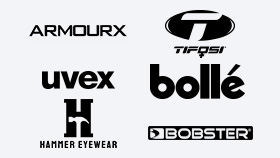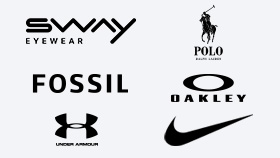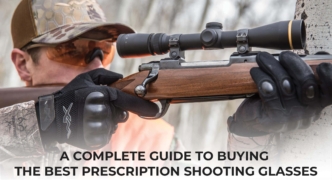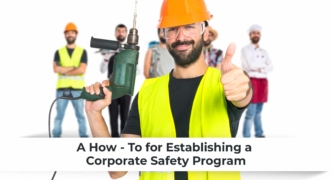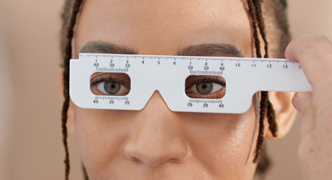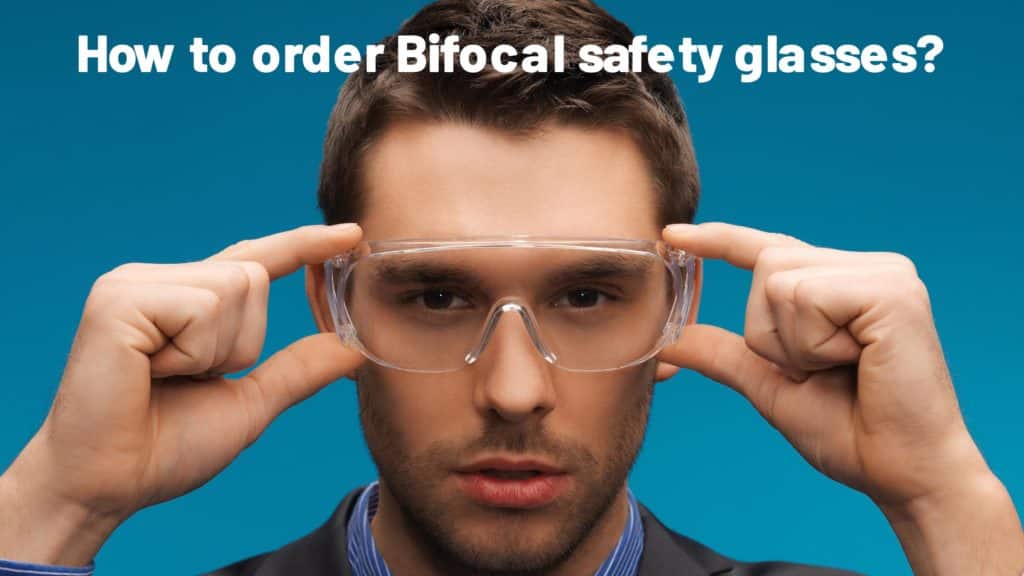

The first step to finding a great pair of prescription safety glasses is understanding the specific hazards that your eyes face on a regular basis. Are you in an environment where chemical exposure is a possibility? Are you at risk of projectile impact on your job site? Take factors like these into consideration when you’re shopping for bifocal safety glasses and look for a pair that’s specifically designed for the eye hazards you may encounter. Consider where you are going to be riding. This can make a big difference in what will be the right eyewear for your needs. You will measure your temple-to-temple width to figure out the total width of your glasses, including the frames, lenses, and bridge. This measurement is used to determine the most appropriate full width of prescription glasses online to fit your face best. For this measurement, you will need a mirror and a rule. Using a photo for this measurement is inappropriate because it cannot be scaled to the accurate sizing; use only a mirror and a ruler for best results. You will measure from your left temple to your right temple. To do so, hold the ruler below your eyes in a horizontal position and measure the distance between the two temples and record your measurement for total width. Another vital part of gathering all of your face measurements is yet another temple measurement; this one isn’t from your temples; it is for the temples or arms of the glasses. To determine the correct length of temples for your glasses, you will use your total width. Temples on glasses usually come in three preset sizes but can also be found in ranges from 4.7 – 5.9 inches. The larger the whole width of your face, the larger the temples will need to be on your glasses. Finally, you should consider upgrading your eye protection. Many modern designs were created with vision in mind. They are specially intended to make it easier to see while staying safe. You could switch to a pair of safety glasses with good peripheral visibility, for example. A small upgrade can potentially make a big difference. If your eyewear is older, it may have superficial damage or discoloration that makes seeing harder. Again, upgrading to a newer option can help. It is important to buy new protective gear periodically to ensure that it can keep you completely safe. To choose the best prescription glasses online, the final piece of information you need to determine is your face shape. Your lens shape and frames should complement your face shape. For this measurement, you will need a mirror, but a photo and a friend will also likely be helpful. Compare your face to these four basic shapes to determine which one your face best corresponds with: circle, square, oval, or heart-shaped. This determination will help match your face shape to the ideal lens shape when shopping for frames. Using facial features, you can determine which face shape you have. Using your face shape, you will be able to select glasses to match. Oval faces have broad and high cheekbones that come to a rounded end at the chin and the forehead. Square faces have broad foreheads and defined jawlines. Heart-shaped faces have wide foreheads with high cheekbones. Circle or round faces feature equal length and width and often appear wider across the cheek area. Remember that safety glasses and goggles require a snug fit for regulatory wear. Still, other prescription glasses may be worn in oversize styles that are more trendy if that is your preference. Consider the following combinations: To ensure that your shopping experience is as easy and stress-free as possible, be sure to complete your measurements before logging on and making selections for prescription glasses online. Once you have determined your magnifier diopter strength, chosen a lens material, and found the best frames…you’re ready to place your order! You’ve done all the hard work, and ordering your bifocal safety glasses is easy. Simply log on to SafetyGearPro.com, find the glasses you want, and add them to your cart. You will be prompted to enter the information for your prescription safety glasses, and then you will be able to proceed to checkout. At checkout, you will indicate your shipping address as well as your payment method and your billing address. Bifocal safety glasses are a necessity for several reasons. The most important reason to wear prescription safety glasses is the protection they provide to your eyes combined with the vision support they offer. Bifocals aren’t necessarily better for eyes than regular glasses, but if your vision necessitates bifocals, they can alleviate strain on your eyes and they are certainly better for your safety. Online diopter charts can easily be found online by using a search engine. If you cannot find one or don’t want to use an online version, diopter charts are also available at optician offices. It is ill-advised to wear bifocal glasses underneath safety glasses. Doing so can create a gap between your safety glasses and your face, which minimizes the effectiveness of your safety glasses and makes eyes more vulnerable to hazards. Going without bifocal safety glasses is risky because it compromises your vision and also makes your eyes entirely vulnerable to the hazards of your workplace. Combat both of these problems by investing in a pair of bifocal safety glasses. Keeping your eyes safe is one of the most important responsibilities of your job, and you can do it by simply investing in a pair of prescription safety glasses. Finding and ordering bifocal safety glasses doesn’t have to be hard. Safety Gear Pro makes the process simple, but if you need assistance, you can reach us by calling (832) 850-2979 or contacting us online for further help placing an order.How to Order Bifocal Safety Glasses How To Guide
Know the Eye Safety Hazards in Your Area

Understand the Types of Safety Glasses Lens Materials

Know Your Frame & Lens Options

Know Your Safety Ratings

Determine Your Magnifier Diopter Strength

Place Your Order

FAQs
1. Why do I need bifocal safety glasses?
2. Are bifocals better for your eyes than regular glasses?
3. Where do I find an online diopter chart?
4. Why can’t I just wear my bifocal glasses under my safety glasses?
5. What are the risks of not wearing bifocal safety glasses?
Prescription Safety Eyewear Solutions




